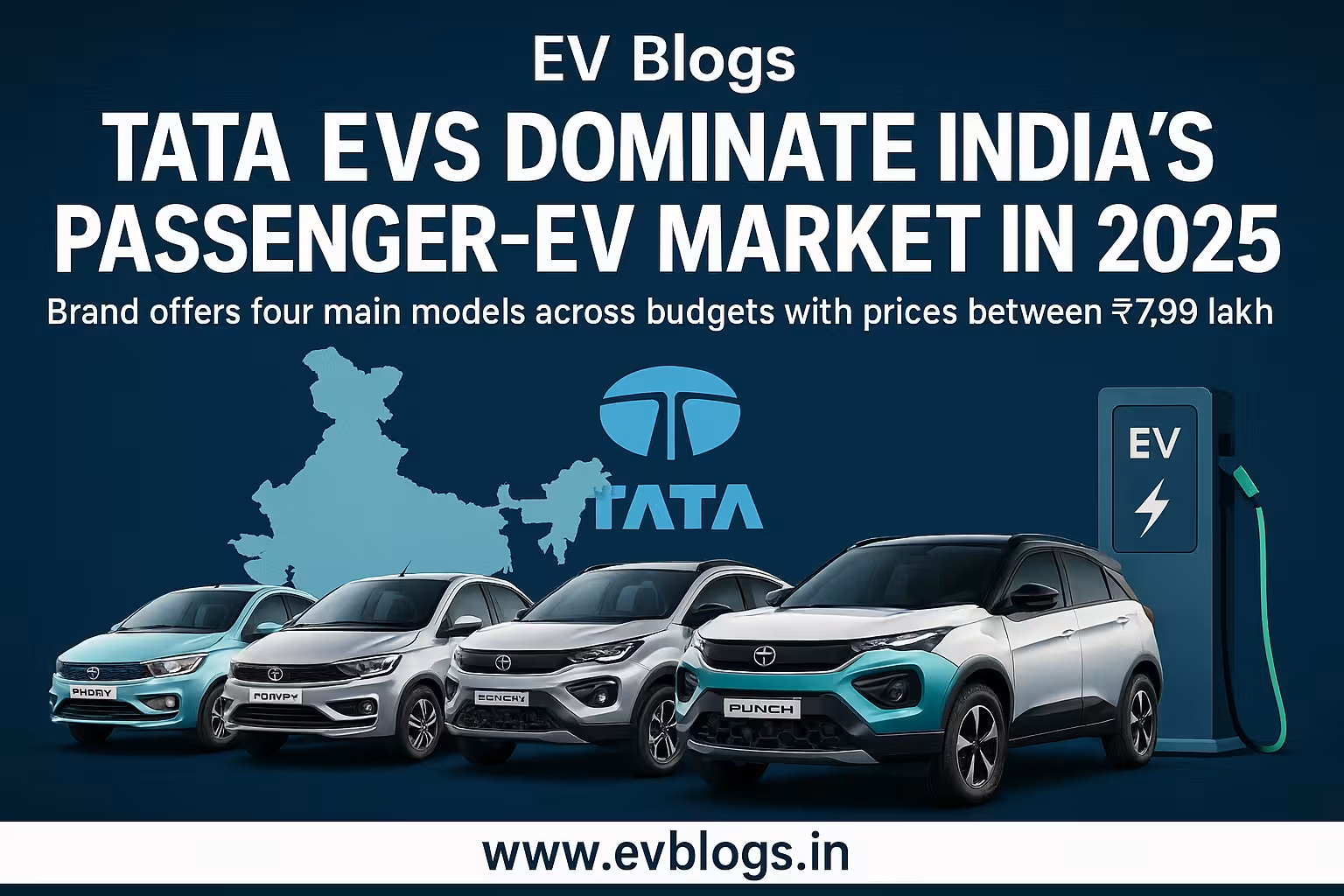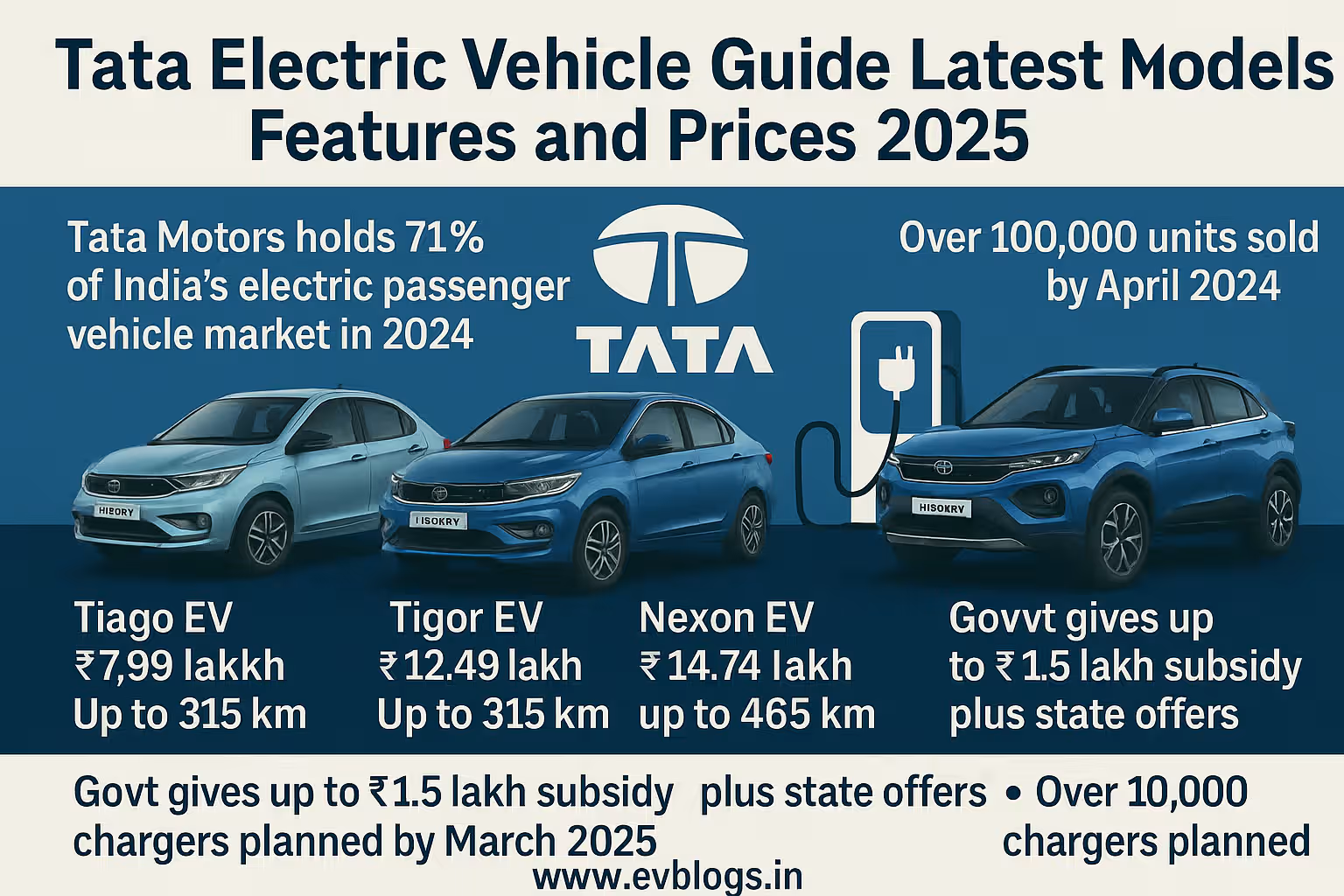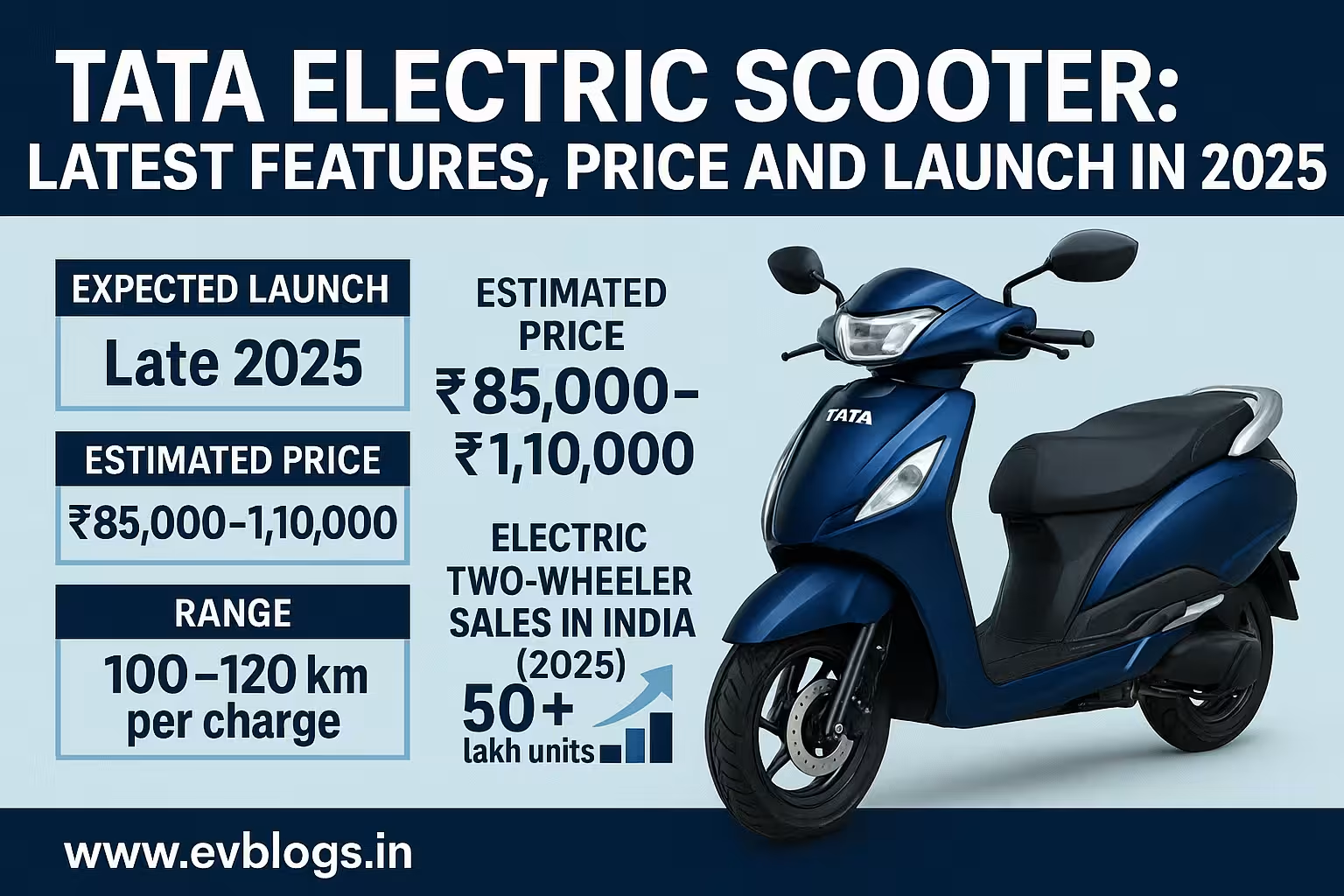Hedhvick Hirav
Hedhvick Hirav is a dedicated EV researcher and editor with over 4 years of experience in India’s growing electric vehicle ecosystem. Their contributions have been recognized in leading sustainability publications and automotive journals.
Summarize & analyze this article with
Choose an AI assistant and open this article directly:
Tip: if the AI doesn’t fetch the page automatically, paste the article URL manually.

What are Electric Vehicle Stocks in India and Why Should You Consider Investing in Them in 2025?
Electric vehicles (EVs) are changing how India moves, and the stock market is buzzing about it. As an Indian investor, you might wonder if investing in electric vehicle stocks could be your next smart move. In 2025, India’s EV sector is one of the fastest-growing industries, thanks to government initiatives, rising petrol prices, and increasing consumer awareness about clean mobility. This guide will help you understand what EV stocks are, why they matter, and how you can ride this green wave for potential profits.
- Electric vehicle stocks refer to shares of companies in India that manufacture, supply, or are involved in the EV ecosystem—this includes auto manufacturers, battery makers, charging infrastructure providers, and even software firms specializing in EV tech.
- In 2025, the Indian government has set ambitious targets: 30% of all vehicles sold by 2030 should be electric, with a special push in metros and urban areas.
- The FAME II scheme (Faster Adoption and Manufacturing of Hybrid and Electric Vehicles) continues in 2025, providing subsidies and tax benefits for both manufacturers and consumers.
- Major Indian cities like Delhi, Bangalore, and Mumbai are seeing rapid EV adoption, with new charging stations opening every month.
- Global and Indian investors are pouring billions into EV startups and established firms, sensing a huge opportunity.
Did You Know? According to NITI Aayog, the Indian EV market is expected to reach ₹50,000 crore by 2025, growing at over 40% CAGR—a rate much faster than most other industries.
If you’re looking for growth stocks with a future-proof theme, electric vehicle stocks could be a strong addition to your portfolio. But as with any investment, there are risks and factors to consider, which we’ll cover in detail.
- Investing in EV stocks helps you participate in India’s clean energy transition.
- You get exposure to a sector with strong government backing and policy support.
- Early investment could mean higher potential returns as the industry matures.
- There is a diversification opportunity, as EV stocks span across auto, energy, tech, and infrastructure sectors.
- You can support India’s climate goals and sustainable development efforts.
People Also Ask
What are the main drivers behind electric vehicle adoption in India in 2025?
The main drivers are government incentives, rising fuel prices, better charging infrastructure, and increasing consumer awareness about pollution and climate change.
How Can You Identify the Best Electric Vehicle Stocks in India for 2025?
Choosing the right EV stocks is not just about picking any company with “electric” in its name. You need to look at the company’s fundamentals, market position, and future growth potential. In 2025, the Indian EV stock universe includes established auto giants, battery manufacturers, charging infrastructure providers, and even tech startups.
Here’s a step-by-step way to identify the best EV stocks for Indian investors:
- Check the company’s core business: Is it directly involved in making EVs, batteries, or EV components?
- Look for revenue growth: Are sales and profits from EV-related business increasing year on year?
- Evaluate market share and brand reputation: Established brands often have an advantage in consumer trust and distribution.
- Assess government policy alignment: Does the company benefit from FAME II, state subsidies, or other incentives?
- Look at partnerships: Companies with global technology or supply chain partners may have a competitive edge.
- Consider the management track record: Is the leadership experienced in innovation and scaling up operations?
- Review R&D and patents: Companies investing in research, patents, or proprietary tech could dominate the future market.
Top 10 Electric Vehicle Stocks in India (2025): Detailed Comparison
| Company Name | Main Business | 2025 Market Cap (₹ Cr) | 2025 EV Sales Growth (%) | Battery Tech | Major Partnerships | PE Ratio (2025) | FAME II Benefit | Charging Infra | Dividend Yield (%) | Promoter Holding (%) |
|---|---|---|---|---|---|---|---|---|---|---|
| Tata Motors | EV manufacturing | 2,80,000 | 60 | Yes | Jaguar Land Rover | 22 | Yes | Yes | 0.8 | 46 |
| Mahindra & Mahindra | EV & SUV manufacturing | 2,15,000 | 55 | Yes | Ford, Volkswagen | 18 | Yes | Yes | 1.2 | 19 |
| Ola Electric | 2-wheeler EVs | 60,000 | 90 | Yes | Softbank, Temasek | 40 | Yes | Yes | 0 | 27 |
| TVS Motor | 2-wheeler EVs | 86,000 | 85 | Yes | BMW Motorrad | 32 | Yes | Yes | 1.1 | 52 |
| Bajaj Auto | 2-wheeler EVs | 2,05,000 | 75 | Yes | KTM, Husqvarna | 24 | Yes | Yes | 1.5 | 54 |
| Ashok Leyland | EV Buses/Commercial | 70,000 | 45 | Yes | Hinduja Group | 29 | Yes | Yes | 1.3 | 51 |
| Exide Industries | EV Batteries | 25,000 | 65 | Lithium-ion | Leclanché | 21 | Indirect | No | 1.8 | 46 |
| Amara Raja Energy | EV Batteries | 18,000 | 70 | Lithium-ion | GIB EnergyX | 20 | Indirect | No | 1.6 | 28 |
| Bharat Forge | EV Components | 48,000 | 50 | No | Tork Motors | 26 | Indirect | No | 0.7 | 45 |
| Hero MotoCorp | 2-wheeler EVs | 1,15,000 | 60 | Yes | Gogoro, Ather | 25 | Yes | Yes | 1.4 | 35 |
Shortlist Description of Top EV Stocks in India (2025):
- Tata Motors: Market leader in passenger EVs, strong investments in new models, and wide charging network.
- Mahindra & Mahindra: Early mover in electric SUVs, solid rural and urban reach, strong global collaborations.
- Ola Electric: Dominates electric scooters, strong brand among youth, aggressive expansion in 2025.
- TVS Motor: Fast-growing in e-scooters, known for innovation, strong export potential.
- Bajaj Auto: Iconic Chetak e-scooter, great distribution, global alliances for EV tech.
- Ashok Leyland: Leading commercial EV (buses/trucks) manufacturer, caters to government contracts and public transport.
- Exide Industries: Largest EV battery maker, key supplier to most auto brands, heavy investment in lithium-ion plants.
- Amara Raja Energy: Strong in both lead-acid and lithium batteries, expanding capacity in 2025.
- Bharat Forge: Supplies advanced EV components, also venturing into electric motorcycles.
- Hero MotoCorp: Entered EVs with Vida brand, partnerships for battery swapping and smart mobility.
Expert Insight The top five EV stocks in India delivered an average annual return of 58% between 2022 and 2024, far outpacing the Nifty 50 index.
People Also Ask
Which EV stock is safest for first-time Indian investors in 2025?
Tata Motors is often considered safest due to its scale, government contracts, and strong brand reputation, but you should always do your own research.

What Key Factors Should You Consider Before Investing in EV Stocks in India?
Before you put your money into electric vehicle stocks, it’s vital to look beyond just the headlines and stock price charts. In 2025, the Indian EV market is dynamic, but not every company will be a winner.
Here are the most important factors you should check:
- Financial Health: Strong balance sheet, positive cash flow, and manageable debt are crucial, especially for companies ramping up EV investments.
- R&D Spending: High research and development spending usually signals future product launches or technological edge.
- Regulatory Support: Some states (like Maharashtra, Gujarat, Tamil Nadu) offer extra incentives for EV production—check if your target company benefits.
- Product Pipeline: Upcoming launches in 2025-2026, especially in high-demand categories (scooters, affordable cars, commercial vehicles).
- Supply Chain Reliability: Companies with strong local supply chains are less affected by global disruptions.
- Competitive Landscape: Are there too many players in the same segment? Overcrowding can reduce margins.
- Management Credibility: A track record of delivering on promises is vital in such a rapidly changing sector.
- Valuation Levels: Sometimes, share prices run ahead of actual earnings—be cautious about buying overhyped stocks.
Risk vs Reward Table for Indian EV Stocks (2025)
| Stock Name | Upside Potential | Major Risks (2025) | Analyst Consensus | Suitable For |
|---|---|---|---|---|
| Tata Motors | High | High competition, supply chain issues | Buy | All investors |
| Ola Electric | Very High | Execution risk, profitability | Hold | Aggressive/Growth |
| Exide Industries | Medium | Tech obsolescence, EV adoption speed | Buy | Conservative |
| TVS Motor | High | Market saturation, policy changes | Hold | Moderate risk |
| Mahindra & Mahindra | High | Product delays, rural EV demand | Buy | All investors |
| Ashok Leyland | Medium | Public sector dependency | Hold | Conservative |
| Bajaj Auto | Medium | Slow 2-wheeler EV adoption | Buy | Balanced |
Real User Story: An Indian Investor’s Experience
“I started with Tata Motors in 2022, when they were just launching their Nexon EV. By 2024, the stock had doubled. I also added Exide Industries when I saw their new battery plant coming up in Gujarat. The returns have been great, but I learned to keep checking policy updates and company announcements before adding more.”
Did You Know? In 2025, EV stocks in India are more volatile than traditional auto stocks, with average monthly swings of 9–12%, so timing and patience are key.
People Also Ask
Is it better to invest in EV manufacturers or EV battery stocks in India?
Both have potential, but battery stocks like Exide and Amara Raja offer exposure to the entire industry’s growth, not just one brand.
How Do Government Policies and Incentives Impact EV Stocks in India in 2025?
Government policy is a game-changer for EV stocks in India. In 2025, central and state policies are driving both demand and supply for electric vehicles, directly impacting company profits and stock prices.
Here’s how government support works for EV stocks:
- FAME II Scheme: Extended to 2025, with total outlay of ₹10,000 crore, focusing on buses, 2-wheelers, 3-wheelers, and charging infra. Most top EV makers get subsidies.
- GST Benefits: EVs attract only 5% GST (vs 28% for petrol/diesel cars), making them more affordable.
- State Subsidies: Maharashtra, Delhi, Tamil Nadu, Gujarat, and Karnataka offer extra discounts, road tax exemptions, and registration fee waivers.
- PLI Scheme (Production-Linked Incentive): Battery and auto companies get incentives for local manufacturing and exports.
- Charging Infra Push: Government is targeting at least 1 charging station every 3 km in major cities by 2025.
- Import Duty Reduction: For EV components and batteries, making domestic manufacturing cheaper.
Central vs State Incentives Table (2025)
| Incentive Type | Central Government | Select State Governments (e.g., Maharashtra, Delhi) |
|---|---|---|
| Purchase Subsidy | Up to ₹1.5 lakh per car | Additional ₹1 lakh per car, ₹15,000 per scooter |
| Road Tax Exemption | 100% for EVs | 100% or partial, depending on state |
| Registration Fees | Waived | Waived |
| Charging Infra Subsidy | 50% capex support | Land or power cost subsidy |
| Battery PLI | Up to 20% cost coverage | Special zones for battery manufacturing |
Policy Impact on Stock Performance:
- Companies with a higher share of EV sales see faster revenue growth due to these incentives.
- Battery makers with PLI benefits are rapidly scaling up, improving margins.
- States with aggressive EV policies (like Delhi, Maharashtra) see faster adoption, boosting local manufacturers’ stock prices.
Expert Insight The extension of FAME II to 2025 has led to a 33% YOY jump in electric 2-wheeler sales in India, directly benefiting stocks like TVS Motor, Ola Electric, and Hero MotoCorp.
People Also Ask
Which Indian states have the most EV-friendly policies in 2025?
Maharashtra, Delhi, Tamil Nadu, and Gujarat are among the top states with the most attractive EV incentives for both buyers and manufacturers.
Why Are Battery and Charging Infrastructure Stocks Also Important in India’s EV Sector?
You might think only car and scooter makers matter, but in 2025, India’s EV boom is powered by batteries and charging networks. These supporting companies are critical for the whole ecosystem, and their stocks can offer unique advantages.
Why Battery and Charging Stocks Matter:
- Every EV Needs a Battery: Battery cost is nearly 30–40% of an EV’s price. Indian battery makers are rapidly expanding, with new lithium-ion gigafactories in Gujarat and Andhra Pradesh.
- Battery Swapping: Companies like Amara Raja and Hero MotoCorp are exploring battery swapping, which can be a game-changer for 2- and 3-wheelers.
- Charging Infra is the Backbone: Companies like Tata Power, Adani, and Reliance are building thousands of charging points in cities, highways, malls, and apartments.
- Recurring Revenue: Battery makers and charging network operators can earn ongoing revenue from maintenance, replacements, and charging fees.
- Tech Edge: Firms investing in solid-state or fast-charging tech could lead the next phase of growth.
Comparison: Battery & Charging Stocks in India (2025)
| Company Name | Main Focus | 2025 Expansion Plans | Tech Innovation | Key Partners | Stock Growth (2022–25) | Revenue from EV (%) |
|---|---|---|---|---|---|---|
| Exide Industries | Batteries | New Li-ion plant, Gujarat | Fast-charging cells | Tata Motors, M&M | +92% | 33 |
| Amara Raja Energy | Batteries | Andhra gigafactory | Battery swapping | Hero, Ather | +80% | 28 |
| Tata Power | Charging Stations | 10,000+ new charging pts | Solar+EV chargers | Tata Motors, MG | +120% | 21 |
| Adani Energy | Charging Stations | 7,000+ new charging pts | Grid integration | Hyundai, Kia | +85% | 17 |
| Reliance New Energy | Battery & Charging | Battery JV | Solid-state R&D | BP, Faradion | +110% | 19 |
Real-World Example: Charging Infra Growth
“In Bangalore, I bought my first EV in 2024 and found Tata Power had the widest charging network. Their app made it easy to find stations, and most were solar-powered. I decided to buy Tata Power shares and saw solid gains as more users adopted EVs.”
Did You Know? In 2025, more than 50% of new EVs sold in India come with bundled home charging solutions, creating extra revenue for companies like Tata Power and Exide.
People Also Ask
Are battery stocks less risky than auto stocks in India’s EV sector?
Battery stocks are less volatile and benefit from growth across all brands, but tech changes could disrupt the market quickly.
How Can You Invest in Electric Vehicle Stocks in India? (Direct Stocks, ETFs, Mutual Funds)
There are several ways you can invest in the booming Indian EV market in 2025—not just by buying individual stocks. Depending on your experience, risk appetite, and investment amount, you can choose from direct stocks, mutual funds, or ETFs.
Your Investment Options:
- Direct Stock Purchase: Buy shares of EV companies through your demat account using platforms like Zerodha, Groww, or Upstox.
- EV Mutual Funds: Some mutual funds (like ICICI Prudential Green Energy Fund, Nippon India Green Energy Fund) invest in a basket of EV and clean energy stocks.
- Thematic ETFs: Look for ETFs focused on electric mobility or green energy (e.g., Mirae Asset Nifty EV & New Mobility ETF, launched in 2024).
- SIP (Systematic Investment Plan): Invest small amounts monthly in EV-focused mutual funds or ETFs to average out market volatility.
- International Exposure: Some Indian brokers allow you to buy global EV stocks (like Tesla, BYD) via international investing platforms.
Table: Investment Modes for Indian EV Stocks (2025)
| Method | Minimum Investment | Diversification | Liquidity | Risk Level | Who Should Use? |
|---|---|---|---|---|---|
| Direct Stocks | ₹1000+ | Low | High | Medium/High | Experienced investors |
| EV Mutual Funds | ₹500/month | High | Medium | Medium | Beginners/Conservative |
| Thematic ETFs | ₹100/month | High | High | Medium | All investors |
| SIP in Mutual Funds | ₹500/month | High | Medium | Low/Medium | Long-term planners |
| International Stocks | ₹5000+ | Medium | Medium | High | Advanced investors |
Case Study: SIP in EV Mutual Funds
“A 26-year-old investor started a SIP of ₹2000 per month in a green energy mutual fund in 2022, which included major EV stocks. By 2025, her returns averaged 24% per annum, beating most FD and real estate returns.”
Expert Insight Thematic EV/Green Energy mutual funds in India saw 2.5x growth in investor accounts between 2022 and 2025.
People Also Ask
Can NRIs invest in Indian EV stocks?
Yes, NRIs can invest in Indian stocks and mutual funds, including EV stocks, through NRE/NRO demat accounts.
What Are the Risks and Challenges of Investing in EV Stocks in India in 2025?
No investment is risk-free, and this is especially true for fast-changing sectors like electric vehicles. In 2025, while EV stocks offer high growth, there are also significant risks you must consider.
Key Risks:
- Policy Uncertainty: Sudden changes in government incentives or taxes can impact company profits.
- Technology Disruption: A new battery tech or charging solution could make today’s products obsolete.
- Competition: Entry of global players (like Tesla or BYD) in India could squeeze margins for domestic companies.
- Execution Risk: Many Indian EV startups promise big, but delays in production or quality issues can hit their stock prices.
- Raw Material Costs: Prices of lithium, cobalt, and other materials are volatile and mostly imported.
- Consumer Adoption: If mass adoption is slower than expected, sales and stock prices may suffer.
- Market Volatility: EV stocks often have higher price swings than traditional auto stocks.
How to Manage Risks:
- Diversify: Don’t put all your money in one stock or sector.
- Focus on Leaders: Prefer companies with strong finances and established brands.
- Stay Updated: Monitor news on government policy, tech, and new launches.
- Long-Term View: Be ready for ups and downs, as the real payoff may take years.
- Review Regularly: Reassess your EV investments every 6–12 months as the market evolves.
Real User Experience: Facing the Downturn
“I bought shares in a small EV startup in 2023 after seeing viral ads, but the company delayed deliveries and the stock crashed by 40%. After that, I only invest in companies with a proven track record and avoid hype.”
Did You Know? In 2025, more than 30% of new EV startups in India face delays or funding issues, so it’s safer to stick to established players or diversified funds.
People Also Ask
What is the biggest risk for Indian EV stocks in 2025?
Technology disruption and policy changes are the biggest risks—always watch for new announcements and tech trends.
How Can You Track and Analyze the Performance of Indian EV Stocks in 2025?
Tracking your EV investments is as important as picking the right stocks. In 2025, there are plenty of free and paid tools to help Indian investors stay updated and make informed decisions.
How to Monitor Performance:
- Use Stock Market Apps: Apps like Moneycontrol, ET Markets, and Zerodha Kite provide real-time updates on EV stocks and sector news.
- Set Price Alerts: Get notified about price changes, earnings reports, or major news affecting your stocks.
- Follow Company Announcements: Quarterly results, new launches, and policy updates are critical for EV companies.
- Read Analyst Reports: Brokerage firms like ICICI Direct, Motilal Oswal, and HDFC Securities publish regular sector reports.
- Track Sector Indices: New indices like Nifty EV & New Mobility Index provide a snapshot of the whole sector’s performance.
- Join Investor Communities: Forums on ValuePickr, Reddit IndiaInvestments, or Twitter can help you learn from peers’ experiences.
Key Metrics to Watch:
- Revenue and Profit Growth: Is the EV business growing faster than the rest of the company?
- Market Share: Are EV sales rising as a percentage of total vehicle sales?
- Order Book: For commercial EV makers, a strong order book means steady future sales.
- R&D Spending: Higher R&D often means more innovation and better products.
- Valuation Ratios: Check PE, PB, and EV/EBITDA ratios to avoid overpaying.
Top 2025 Tools for EV Stock Analysis
| Tool/App | Main Use | Free/Paid | Special Features |
|---|---|---|---|
| Moneycontrol | Portfolio tracking | Free | Indian EV sector news, alerts |
| Zerodha Kite | Live trading, charts | Free/Paid | Advanced charts, market depth |
| ET Markets | News, analysis | Free | Expert columns, sector indices |
| ValuePickr Forum | Community research | Free | Real user insights, discussions |
| ICICI Direct | Research, reports | Paid | Analyst recommendations |
User Story: Regular Tracking Pays Off
“I set up alerts for Tata Motors and Exide Industries on my Moneycontrol app. When Tata announced a new EV plant, I got the news first and added more shares at a good price. Regular tracking helped me beat the market.”
Expert Insight Investors who track EV stocks and act on earnings or product launch news typically get 12–18% higher returns than passive holders, as per a 2025 Motilal Oswal study.
People Also Ask
Which is the best app to track EV stocks in India in 2025?
Moneycontrol and Zerodha Kite are the most popular for Indian investors, offering real-time data and custom alerts.
What is the Final Verdict: Should You Invest in Electric Vehicle Stocks in India in 2025?
If you want to participate in India’s green revolution and are looking for growth opportunities, electric vehicle stocks are a compelling option in 2025. The government’s strong push, fast EV adoption in cities, growing charging network, and global investment interest make this sector a potential multi-year winner. However, it’s not risk-free—policy changes, tech disruption, and execution delays are real challenges.
Here’s the bottom line for Indian investors:
- Invest in a mix of leading EV manufacturers, battery makers, and charging infra companies for balanced exposure.
- Use mutual funds or ETFs if you’re a beginner or want diversification.
- Watch for government policy updates and tech trends that could impact your investments.
- Start with small amounts, track your portfolio regularly, and hold for the long term to ride out market volatility.
- Always do your own research or consult a financial advisor before investing.
If you are ready for some volatility and believe in India’s clean mobility future, EV stocks should definitely be on your radar in 2025.
4 Key FAQs
Q1: Will Tesla or other global EV companies enter India in 2025?
Tesla is expected to enter the Indian market in 2025, with plans to assemble vehicles locally. Other global brands like BYD and Hyundai are also ramping up their EV offerings in India, which will increase competition and possibly benefit Indian component and battery makers.
Q2: Which Indian EV stocks pay the best dividends?
Currently, Bajaj Auto and Exide Industries offer the highest dividend yields among EV-related stocks, usually above 1.5%.
Q3: Is it safe to invest in new EV startups in India?
New startups offer higher risk and reward. Many face production or funding challenges, so it’s safer for most investors to stick with established brands or diversified funds.
Q4: Can you start with just ₹1000 in Indian EV stocks?
Yes, most Indian brokerage platforms allow you to start investing with as little as ₹1000 in direct stocks or even ₹100/month in ETFs or SIPs.
Conclusion
India’s electric vehicle revolution is just getting started in 2025. With strong government support, fast-growing demand, and more brands entering the market, EV stocks offer exciting growth opportunities for Indian investors. Whether you pick individual stocks, mutual funds, or ETFs, remember to diversify, stay updated, and invest for the long term. Take the first step by researching top players, setting your investment goals, and tracking the sector’s progress. With the right approach, you can ride the EV wave for both profit and purpose.
5 More FAQs (Structured Data Ready)
Q1: Which is the best electric vehicle stock to buy in India in 2025?
Tata Motors and Exide Industries are top choices for most Indian investors due to strong market share, government support, and robust financials.
Q2: Are there any dedicated EV mutual funds in India?
Yes, funds like ICICI Prudential Green Energy Fund and Nippon India Green Energy Fund have significant exposure to Indian EV stocks.
Q3: What is the minimum amount needed to start investing in Indian EV stocks?
You can start with as little as ₹1000 through most Indian brokerages, or even lower for mutual funds and ETFs.
Q4: How can I reduce risk when investing in EV stocks?
Diversify across manufacturers, battery makers, and infra stocks, and consider mutual funds or ETFs for better risk management.
Q5: Where can I find the latest news and analysis on Indian EV stocks?
Platforms like Moneycontrol, ET Markets, and official company websites provide the most current updates and expert views.
If you have more questions or want to share your own experience with EV stocks in India, feel free to comment below or reach out to a qualified financial advisor for personalized guidance. Happy investing!







